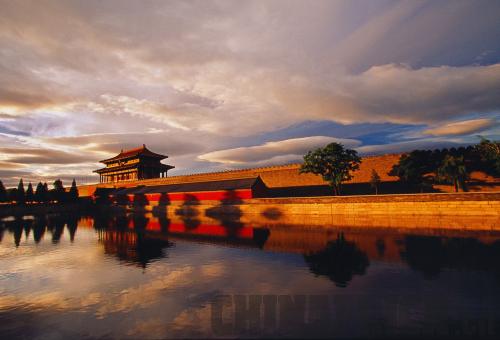|
 |
|
The Palace Museum |
The Palace Museum
The numbers give you an idea of the magnitude of this Ming Dynasty (1368-1644) masterpiece: 1 million laborers to build it, 14 years to complete it, about 8,700 rooms spreading over 720,000 square meters.
The Palace Museum is currently going through an extensive restoration that will last until 2020 when it will celebrate its 600th anniversary. But today, its biggest challenge is to find enough space to display its entire permanent collection, which amounts to more than a million rare and valuable works of art. Built on the imperial collections of the Ming and Qing dynasties (1368-1911), it was expanded in the 20th century with new acquisitions, donations, and new archaeological discoveries.
You will discover imperial ceramics and porcelains, bronze ware like complete sets of musical instruments used by imperial orchestras, jade and artefacts used in the daily life of the palace.
As you might have guessed by now, the area is much too big for a single visit and it might be a good idea to strategize and organize your visit around a theme or a specific area. Don't hesitate to browse the user-friendly Palace Museum website (http://www.dpm.org.cn/), which will help you plan your visit according to the time you have from a two-hour visit to a one-day tour. You can also download a useful map, but if you forget, don't worry, you can buy one on site for 5 yuan ($0.8).
The National Museum of China
After four years of extensive renovation, the National Museum of China has reopened its doors.
It nearly tripled in size to become the largest museum in the world, from 65,000 square meters to 191,900 square meters, and now houses two permanent collections of more than 620,000 cultural items. The first one, entitled "Ancient China," displays precious pieces from the Stone Age to the Ming and Qing dynasties and boasts impressive bronze and Buddha statues collections, as well as very nice tri-colored glazed potteries of the Tang Dynasty (618-907). The other, called "Road to Rejuvenation," reflects China from the first Opium War (1840-42) onwards. The museum also welcomes temporary exhibitions and art from around the world in its Asia, Africa, Europe and America rooms.
An audio guide is available in English, French, Spanish, Russian, Arabic, Japanese and Korean for 30 yuan ($4.6). You'll just have to show a valid ID and leave a 100 yuan ($15.4) deposit. After your visit, you'll be able to rest your legs in the tea room or café or buy a souvenir at the gift shop or bookshop.
Don't hesitate to visit their website (http://www.chnmuseum.cn/) where you will find useful information on the exhibitions, as well as how to get there.
Good to know
> With the Beijing Museum Pass, up to three adults can get discounts to nearly all the city's main museums as well as several temples and cultural sights. It's valid through for a year. A limited number of booklets are available between late December and late January and can be purchased at main branches of China Post Offices for 80 yuan ($12.3).
Useful information:
> The Palace Museum> April 1–October 31: 8:30 to 17:00 > Last entry: 16:10 > Last tickets are sold at 16:00 > Ticket: 60 yuan ($9.2)> November 1–March 31: 8:30 to 16:30 > Last entry: 15:40> Ticket: 40 yuan ($6.2)
> The National Museum of China
> During trial operation:
> Tuesday–Sunday: 9:00-17:00
> Closed on Mondays
> Tickets issued until 16:00
> Last admission at 16:15
> Free entrance for the permanent exhibitions
(Get free tickets from the Ticket Office at the West Gate by showing your valid ID) |